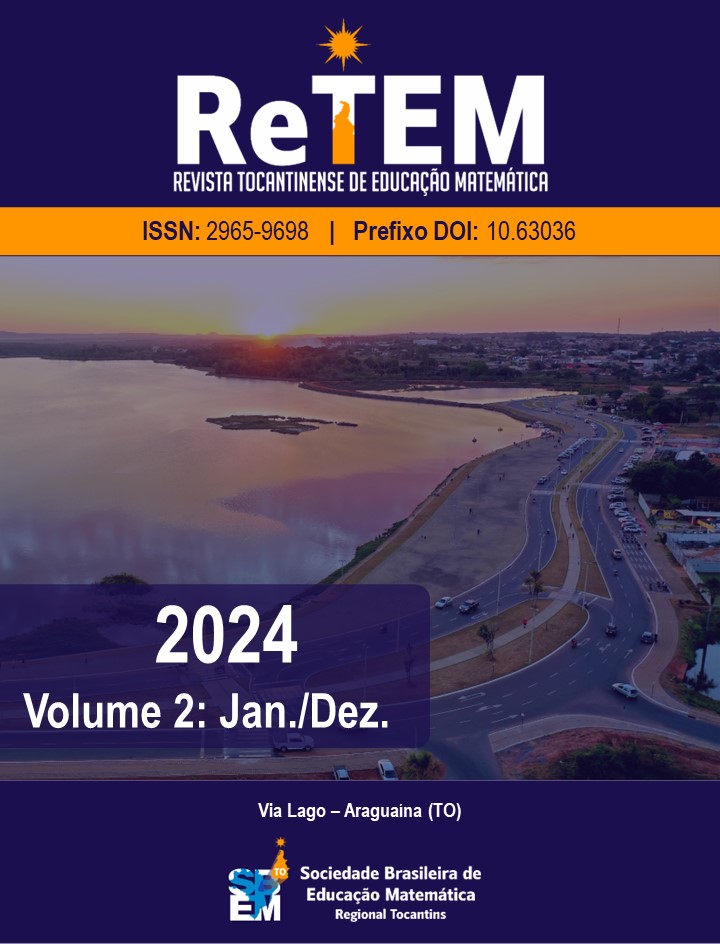A POSSIBLE ARTICULATION BETWEEN COMPUTATIONAL THINKING AND STATISTICAL EDUCATION: AN EXPERIENCE REPORT.
DOI:
10.63036/ReTEM.2965-9698.2024.v2.44Keywords:
Average, Fashion, Median, Technologies, Mathematics EducationAbstract
“Mathematics is in everything!” Answers like this are usually said by different people who enjoy Mathematics and are usually just phrases said without any proper basis. When we thought about this, the question arose: how can we work on the issue of food waste in a school, raise awareness among students and teach Mathematics? With this work, we aim to discuss the issue of food waste, raise awareness among students and teach Mathematics. To this end, we used data relating to daily food waste in a school, working together with students to interpret this data, through computational and statistical concepts. Furthermore, it is known that, in the connected world in which we live, computational thinking is of paramount importance, not only for learning to program, but also for obtaining a more comprehensive understanding of the world in which we live. It is important to emphasize that thinking computationally is not just teaching how to program, but rather, how to interpret, analyze and abstract the concatenation of ideas from the simplest to the most elaborate. The importance of teaching statistical education is highlighted, as in contemporary society, a person who cannot interpret data from tables and graphs has difficulty understanding the functioning and organization of the information they receive. In other words, this field of knowledge contributes to the student's civic education, in addition to enabling them to understand real-world problems and letting them choose their own strategies to solve them.
Downloads
Metrics
References
BRASIL. Ministério da Educação. Base Nacional Comum Curricular. Brasília: 2018. Disponível em: http://basenacionalcomum.mec.gov.br/images/BNCC_EI_EF_110518_versaofinal_site.pdf . Acesso em: 4 fev. 2024.
CONCEIÇÃO, J. Da elaboração de projetos à construção de conceitos estatísticos: uma experiência com alunos do ensino médio. REAMEC - Rede Amazônica de Educação em Ciências e Matemática, Cuiabá, Brasil, v. 9, n. 1, p. e21014, 2021. https://doi.org/10.26571/reamec.v9i1.10868 DOI: https://doi.org/10.26571/reamec.v9i1.10868
COSTA, M. C.; MARTINS, S. G.; DOMINGOS, A. As stem e o pensamento computacional: resolvendo desafios da vida real no ensino superior. REAMEC - Rede Amazônica de Educação em Ciências e Matemática, Cuiabá, Brasil, v. 11, n. 1, p. e23100, 2023. https://doi.org/10.26571/reamec.v11i1.16743 DOI: https://doi.org/10.26571/reamec.v11i1.16743
FAO – Organização das Nações Unidas para Alimentação e Agricultura. El estado de la
seguridad alimentaria y la nutrición en el mundo: Fomentando la resiliencia
climática en aras de la seguridad alimentaria y la nutrición. Roma, 2018.
NEVES, A. Pensamento Computacional: Saiba como aplicar à realidade das escolas. Happy Code – Escola de Tecnologia, out., 2021. Disponível em: https://www.happycode.pt/blogs/news/pensamento-computacional-saiba-como-aplicar-a-realidade-das-escolas. Acesso em: 4 fev. 2024.
PAPERT, S. A máquina das crianças: repensando a escola na era da informática. Porto Alegre: Artes Médicas, 2008.
SOUZA, L. A Educação Estatística no Ensino Fundamental e os Recursos Tecnológicos. São Paulo, 2009. 196f. Dissertação (Mestrado) - Universidade Cruzeiro do Sul, UNICSUL,
Programa de Pós-Graduação em Ensino de Ciências e Matemática, São Paulo, 2009. Disponível em: https://www.researchgate.net/publication/346677065_A_Educacao_Estatistica_no_Ensino_Fundamental_e_os_Recursos_Tecnologicos. Acesso em: 4 fev. 2024.
Downloads
Published
Métricas
Visualizações do artigo: 249 PDF (Português (Brasil)) downloads: 165
How to Cite
Issue
Section
License
Copyright (c) 2024 Victor Patrick Sena Barbosa Lima, Douglas Marin

This work is licensed under a Creative Commons Attribution-NonCommercial 4.0 International License.
Licenciado sob a Licença Creative Commons Attribution-NonCommercial 4.0 International (CC BY-NC 4.0). Esta licença permite compartilhar, copiar, redistribuir o manuscrito em qualquer meio ou formato. Além disso, permite adaptar, remixar, transformar e construir sobre o material, desde que seja atribuído o devido crédito de autoria e publicação inicial neste periódico.


 Português (Brasil)
Português (Brasil)
 English
English
 Español (España)
Español (España)


























